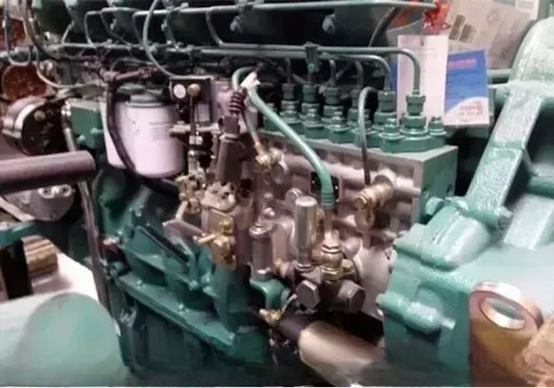
Continuous High Temperatures! Common Reasons for Skid Steer Loader Engine Overheating
Share
During the hot summer days, the relentless high temperatures not only greatly impact the lives of those working with construction machinery but also complicate the use and maintenance of the equipment. There are numerous factors that can cause abnormally high engine temperatures during operation. Today, let's explore some common reasons for engine overheating and discuss how to effectively maintain and safely use skid steer loaders in the summer heat, thereby extending the lifespan of the machinery.
1. Clogging of the Skid Steer Loader Radiator Surface
The issue of high engine temperatures in skid steer loaders is often caused by blockages on the surface of the radiator. To increase the heat dissipation area, the radiator features narrow tubes with cooling fins installed between them. These fins have small gaps that can easily become clogged with debris such as poplar fluff, dirt, and insect remains.
Once the radiator becomes blocked, it results in insufficient airflow and a significant reduction in its cooling capacity, leading to excessively high temperatures of the engine coolant. Therefore, it's crucial to perform a thorough cleaning of the radiator to ensure it operates at optimal conditions throughout the summer. This maintenance step is essential to prevent overheating and maintain the efficiency of the engine.
2. Internal Blockage of the Skid Steer Loader Radiator
Modern skid steer loaders rarely use water as coolant, which has greatly reduced instances of internal radiator blockages. However, some operators still prefer to use water, which contains various minerals that can easily deposit within the radiator and form scale. This accumulation impedes heat dissipation and can lead to high temperatures. For those still using water, it's important to consider switching to a designated coolant or regularly cleaning the radiator to prevent such issues.
Everyone should check if there is any scale buildup inside the radiator. If there is significant scaling, it is advisable to take the machine to a specialist radiator repair shop for thorough cleaning and clearing. This preventive measure can help maintain efficient cooling and prevent overheating, especially during the hot summer months.
3. Skid Steer Loader Fan Clutch Failure
The fan clutch plays a crucial role in managing the cooling system. It reduces the fan speed when the coolant temperature is not high, minimizing energy consumption and thereby saving fuel. However, if the fan clutch malfunctions, it may fail to increase the fan speed during high coolant temperatures, which can lead to the engine overheating. It is important to regularly inspect and maintain the fan clutch to ensure it functions properly, especially under conditions that demand high cooling efficiency.

If your engine is experiencing high temperatures and all other components appear to be functioning properly, it might be a good idea to consider replacing the fan clutch.
4. Insufficient Tension in Skid Steer Loader Fan Belt
A fan belt with insufficient tension is a common cause of high engine temperatures and is relatively easy to diagnose. If you can feel slackness when pressing on the belt with your hand, or if the belt squeals when you rev the engine, these are clear signs that the belt tension is inadequate.

Insufficient belt tension results in lower rotational speeds for both the fan and the water pump, leading to a significant decrease in the cooling capacity. Consequently, this can lead to overheating of the engine. It's important to regularly check the belt tension and adjust or replace the belt as necessary to maintain proper engine temperature and prevent potential damage.
5. Incorrect Ignition Timing in Skid Steer Loaders
In the era of electronic control, issues with high engine temperatures due to incorrect ignition timing have largely been eliminated. However, on older engines that use mechanical pumps, high temperatures due to improper timing can still occur.
If your vehicle uses a mechanical pump and is experiencing high temperatures, it is advisable to check whether the ignition timing is within the normal range. Incorrect ignition timing can lead to inefficient engine operation, causing it to run hotter than intended. Properly setting the ignition timing can help ensure the engine runs smoothly and maintains a suitable temperature.
6. High Exhaust Back Pressure
Many might not be aware that high exhaust back pressure can also lead to high engine temperatures. Generally, there are two common causes of increased exhaust back pressure:
- Poor Repositioning of the Exhaust Brake Butterfly Valve: This can lead to poor exhaust flow.
-
Blockage in the Muffler or SCR Catalyst: Such blockages can cause excessively high exhaust back pressure.

7. Thermostat Failure
The thermostat plays a critical role in maintaining the engine coolant temperature within a reasonable range; it should not be too low or too high. If the thermostat malfunctions, failing to open when the temperature exceeds the activation threshold or opening only slightly, it can cause the engine temperature to become excessively high.

If you encounter high engine temperatures, it's essential to check whether the thermostat is functioning correctly. However, it's crucial not to remove the thermostat as a workaround. Removing it can lead to uncontrolled engine temperatures, resulting in higher fuel consumption and increased engine wear.
Summary
The causes of high engine temperatures are numerous, and the ones listed here are just some of the most common. Besides issues inherent to the vehicle itself, improper operation can also lead to engine overheating. Therefore, when facing such problems, it is crucial to conduct a systematic inspection rather than rushing into blind repairs. A machine functions as a whole; an issue in any part can lead to various, sometimes similar, malfunctions. Understanding and addressing the root causes comprehensively is key to effective troubleshooting and maintenance.
